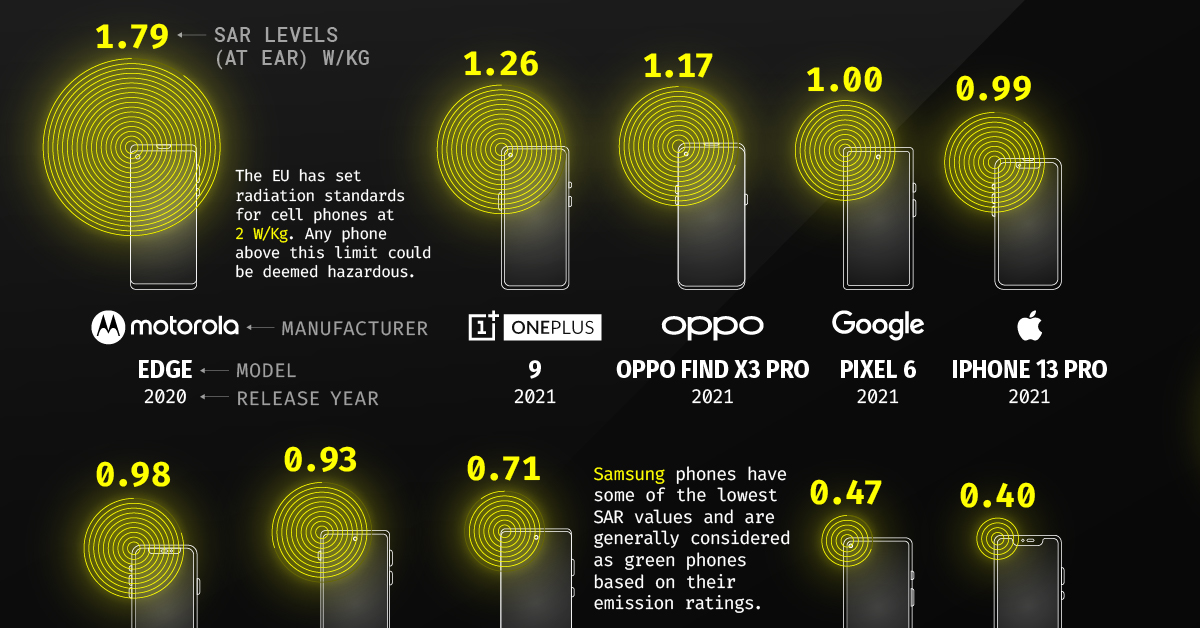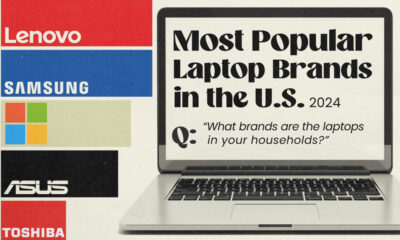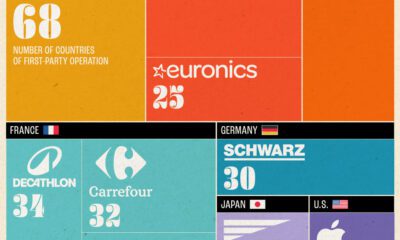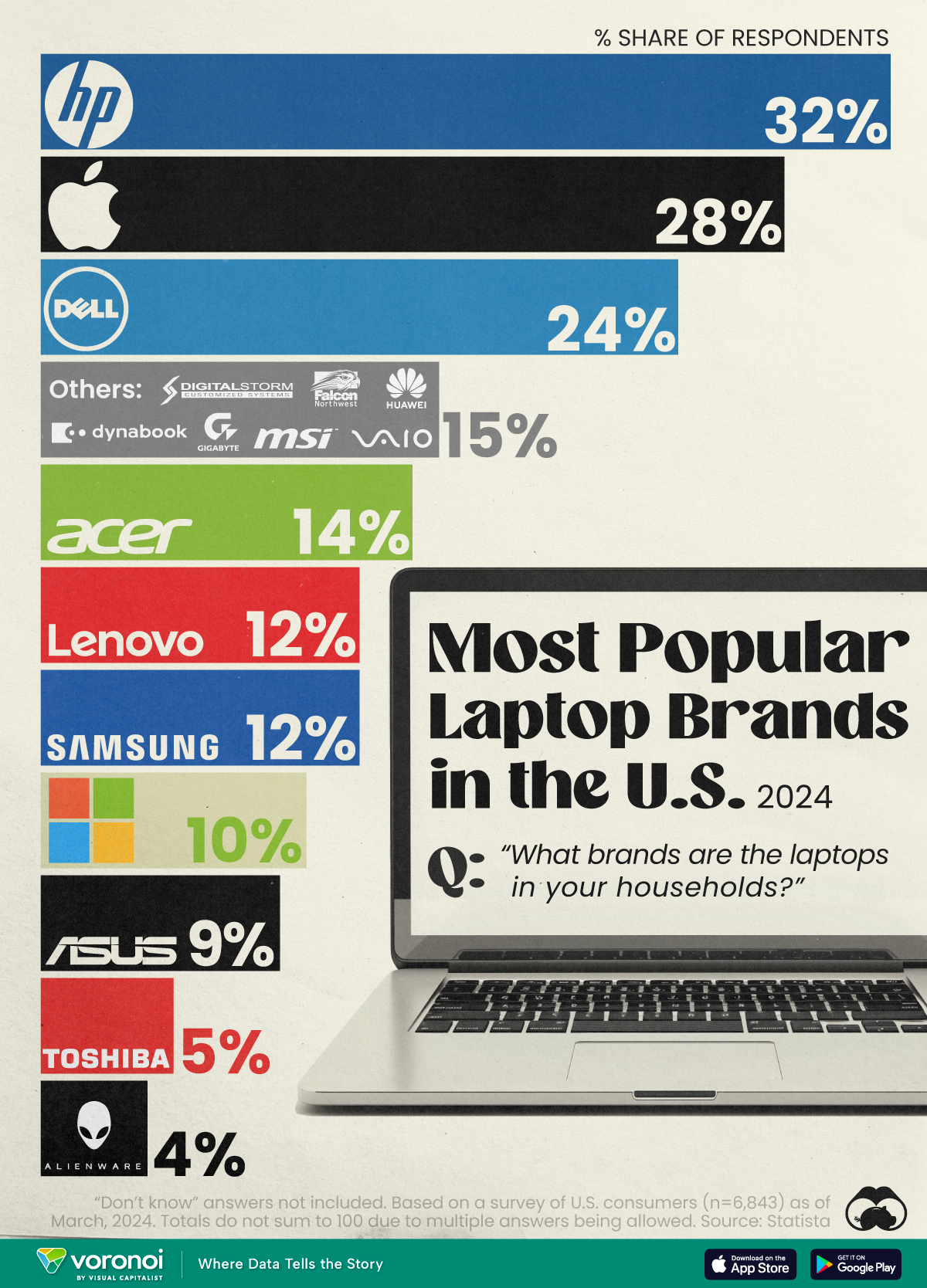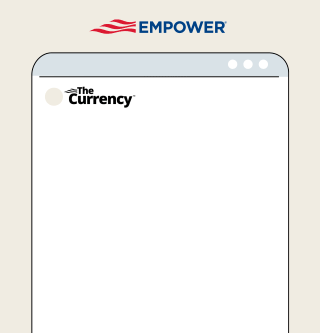Technology
How Much Radiation is Emitted by Popular Smartphones?
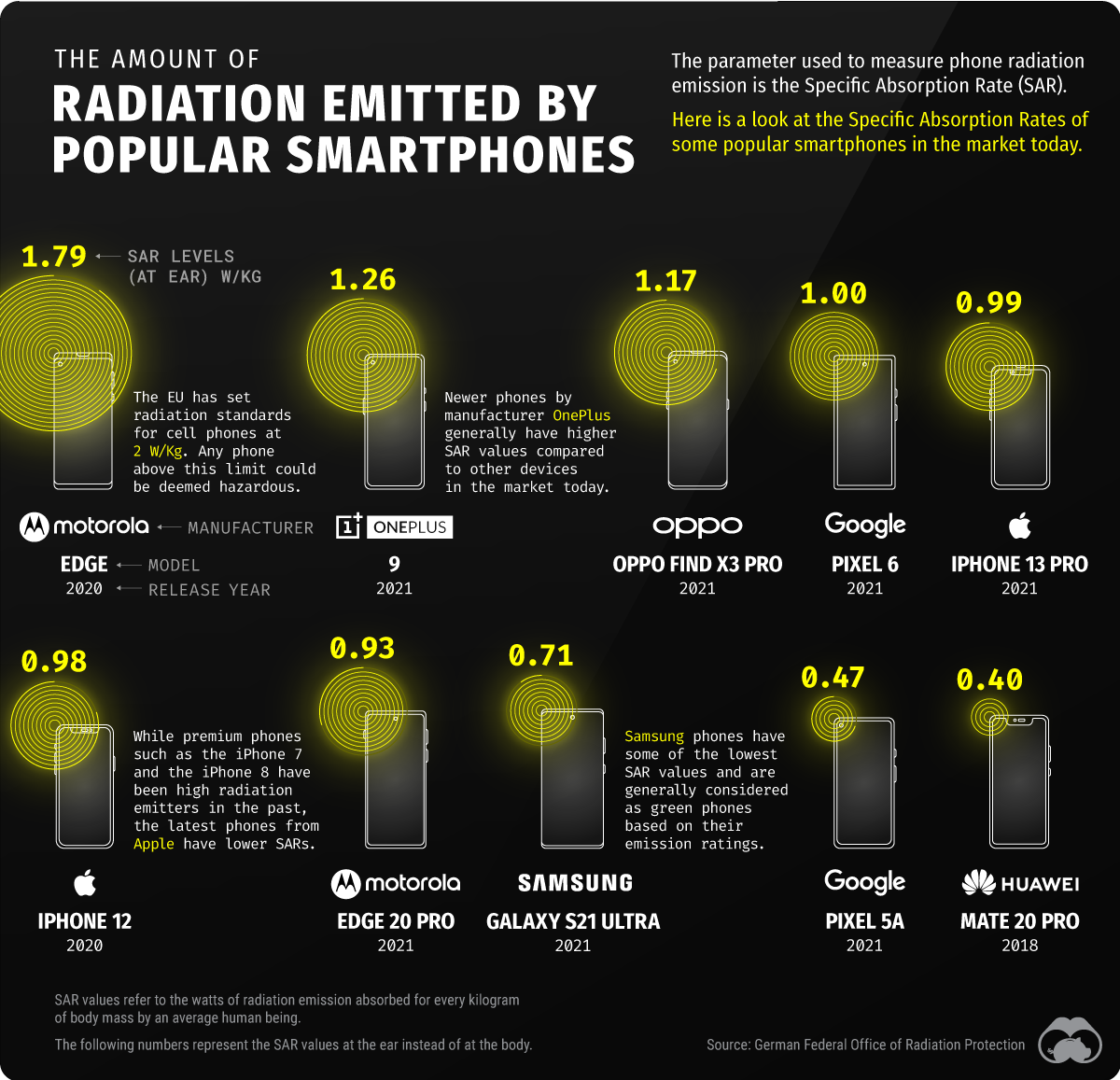
Radiation Emissions of Popular Smartphones
Smartphones have become an integral part of our everyday lives. From work and school to daily tasks, these handheld devices have brought everything into the palm of our hands.
Most people spend 5-6 hours on their phones each day. And, given that our phones emit a tiny amount of radiation, we’re exposing ourselves to radiation for hours each day.
But different phones emit different amounts of radiation.
With the help of data collected by the German Federal Office of Radiation Protection, we visualize the radiation emissions of some popular smartphones in the market today.
Radiation and SAR Values of Smartphones
Smartphones and other mobile devices emit tiny amounts of radiofrequency (RF) radiation. Humans can absorb this radiation when the smartphone is being used or is lying dormant anywhere near their bodies.
The parameter used to measure phone radiation emissions is the Specific Absorption Rate (SAR). It is the unit of measurement that represents the quantity of electromagnetic energy absorbed by the body when using a mobile device.
The Council of the European Union has set radiation standards for cell phones at 2 watts per kilogram, measured over the 10 grams of tissue that is absorbing the most signal.
SAR values are calculated at the ear (speaking on the phone) and at the body (kept in your pocket). For the purposes of this article, we’ve used the former calculations.
Smartphones With the Highest Levels of Radiation Emissions
The Motorola Edge has the highest radiation emission with a SAR value of 1.79 watts of radiation per kilogram. That’s significantly higher than most other smartphone models in the market today and close to the limits set by the EU for cellphones.
Coming in second is the Axon 11 5G by ZTE with 1.59, followed by the OnePlus 6T at a close third with 1.55 W/kg. The Sony Experia AX2 Plus with 1.41 and the Google Pixel 3 XL and 3A XL at 1.39 round out the top five.
Here is a look at the 10 smartphones that emit the highest level of radiation:
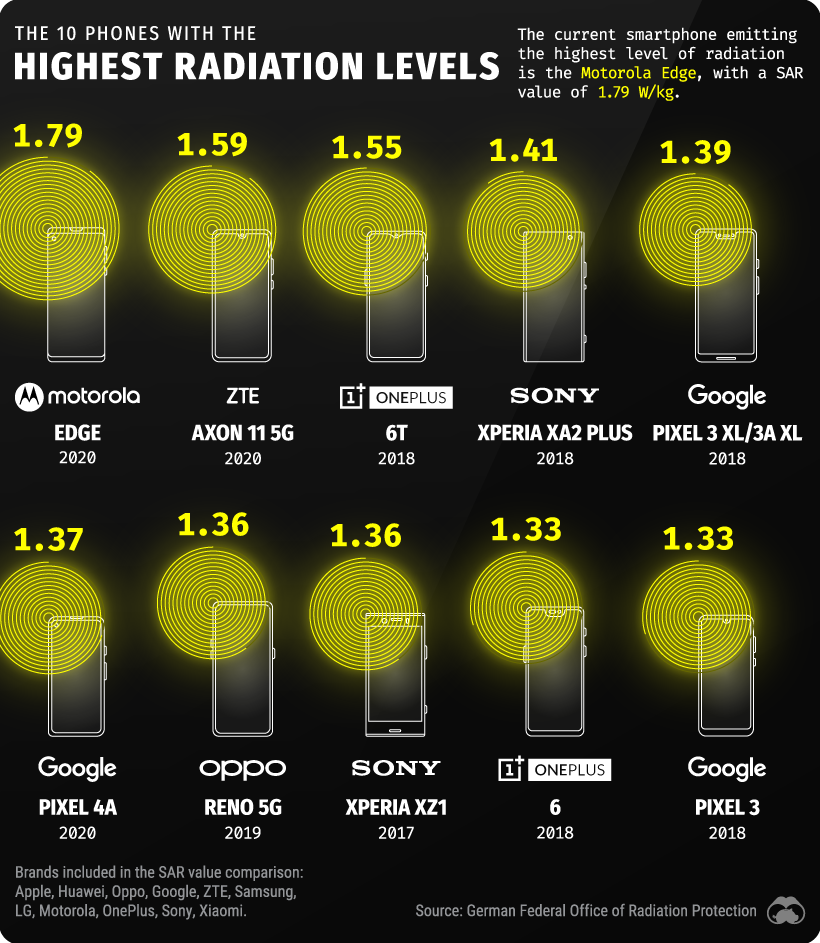
Now that we have detailed the worst offenders let’s look at the smartphones with the lowest levels of radiation emissions.
Smartphones With the Lowest Levels of Radiation Emissions
The smartphone with the lowest SAR value is the ZTE Blade V10, with 0.13 watts of radiation per kilogram.
Mobile devices by Samsung carry some of the least radiation risks. The company has four phones considered to be the best in the category. The Galaxy Note 10+ is the best model in their line-up, emitting a meager 0.19 watts per kilogram.
Here is a look at the 10 smartphones that emit the lowest levels of radiation:
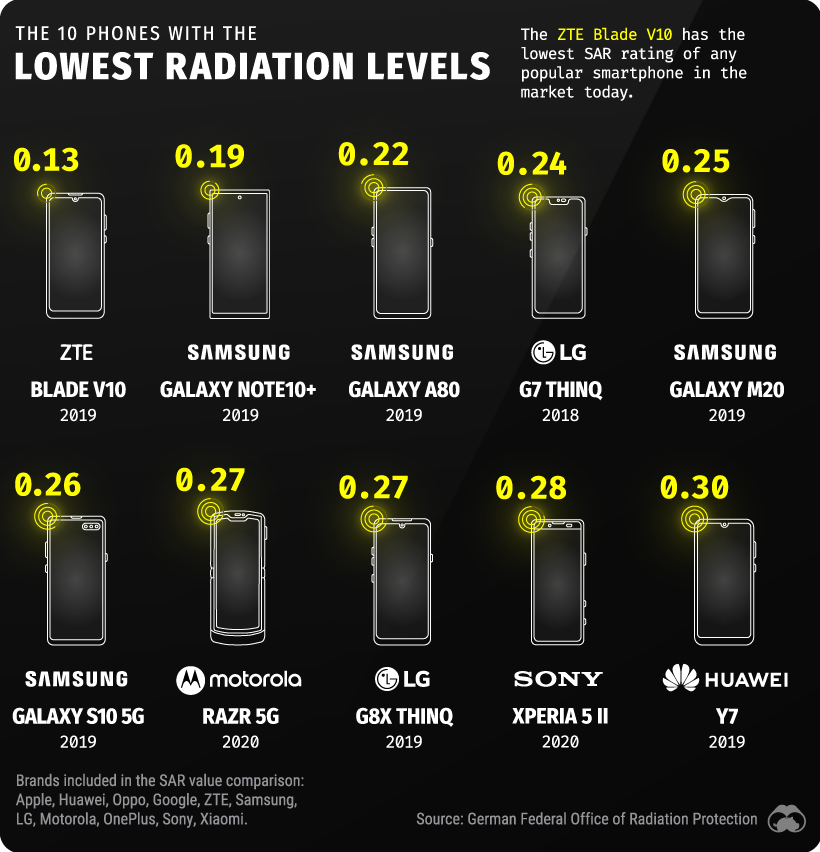
There is currently no significant research proving the harmful effects of phone radiation.
Despite this, people who are in contact with their devices for extended periods can at least quantify their radiation exposure and make choices about which brands serve their needs.
Technology
What Laptop Brands do Americans Use in 2024?
Statista surveyed nearly 7,000 American adults aged 18–64 asking them what laptop brands were in their households. These are the results.
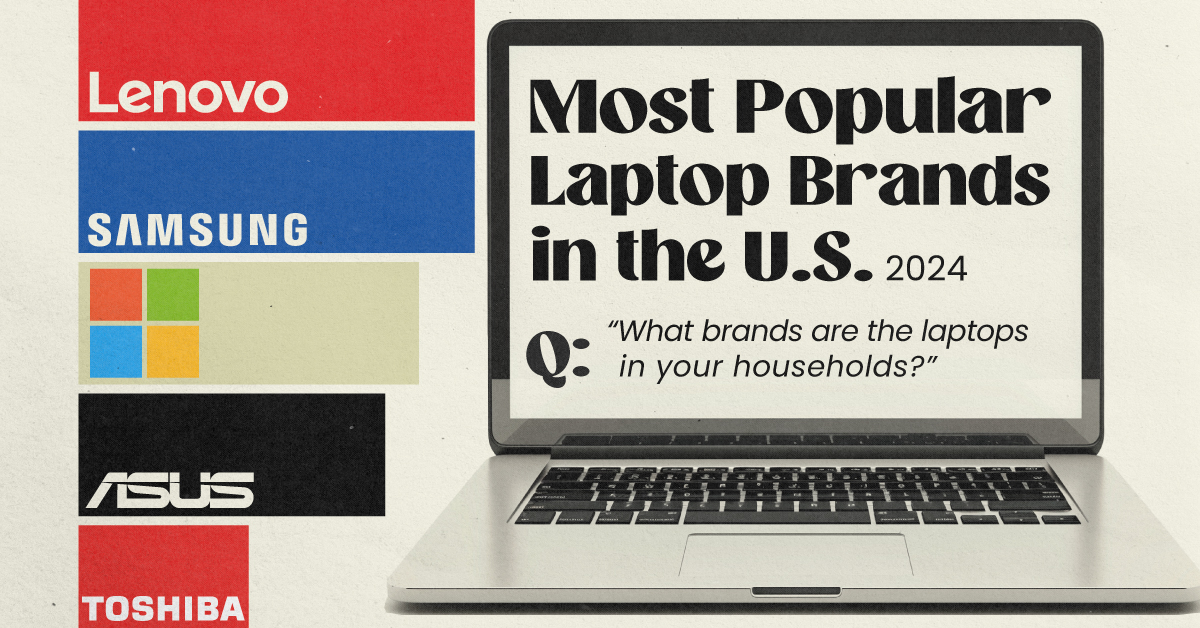
What Laptop Brands do Americans Use in 2024?
This was originally posted on our Voronoi app. Download the app for free on iOS or Android and discover incredible data-driven charts from a variety of trusted sources.
We chart the market share of commonly used laptop brands in the U.S., per Statista survey data. Multiple responses were allowed, and percentages do not sum to 100.
The U.S. Laptop Market Landscape
HP emerges as the preferred choice for laptops, present in 32% of surveyed households.
Meanwhile, Apple’s dominance in America’s smartphone segment isn’t quite matched in the laptop market with their Macbooks, trailing HP at 28% of households.
Here’s the full survey data.
| Brand | Share of Respondents |
|---|---|
| HP | 32% |
| Apple | 28% |
| Dell | 24% |
| Acer | 14% |
| Lenovo | 12% |
| Samsung | 12% |
| Microsoft | 10% |
| ASUS | 9% |
| Toshiba | 5% |
| Alienware | 4% |
| DigitalStorm | 2% |
| Falcon Northwest | 2% |
| Huawei | 2% |
| MSI | 2% |
| Vaio | 1% |
| Other | 6% |
| Don't know | 2% |
Note: DigitalStorm, Falcon Northwest, Huawei, MSI, and Vaio’s share of respondents were combined into the “Other” category in the graphic. “Don’t know” responses were not visualized.
Another well-known manufacturer, Dell, comes in at 24%, rounding out the top three by household share.
Other big laptop brands, Acer, Lenovo, Samsung, and Microsoft all range between 10–15% of surveyed households.
For a broader picture, market research firm, Technavio, predicts a 3.2% combined average growth rate for the global laptop market from 2024–28. A lion’s share of that growth (42%) is expected to come from North America. Rising popularity of gaming laptops will be a key tailwind.
Interestingly, thanks to their graphics processing units, gaming laptops are also in demand for AI/machine-learning work. Some companies have already started releasing models catering to this specific audience.
Learn More About Tech From Visual Capitalist
If you enjoyed this post, check out The Top 100 Most Valuable Brands in 2024 where technology companies make up nearly one-fifth of the list by themselves.
-
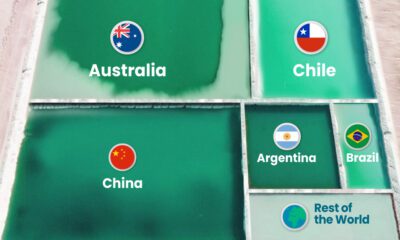
 Energy1 week ago
Energy1 week agoRanked: The World’s Largest Lithium Producers in 2023
-
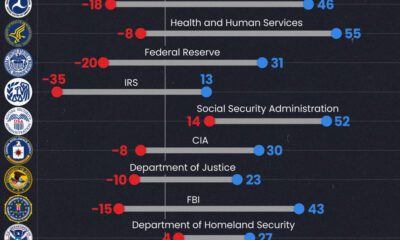
 Public Opinion2 weeks ago
Public Opinion2 weeks agoCharted: How Democrats and Republicans View Government Agencies
-

 Globalization2 weeks ago
Globalization2 weeks agoMapped: The Top Exports in Asian Countries
-

 Finance2 weeks ago
Finance2 weeks agoRanked: The World’s 50 Largest Private Equity Firms
-

 United States2 weeks ago
United States2 weeks agoMapped: The 10 U.S. States With the Lowest Real GDP Growth
-

 China2 weeks ago
China2 weeks agoComparing New and Current U.S. Tariffs on Chinese Imports
-

 Politics2 weeks ago
Politics2 weeks agoWhich Countries Have the Most Economic Influence in Southeast Asia?
-

 population2 weeks ago
population2 weeks agoThe Top 25 Nationalities of U.S. Immigrants




